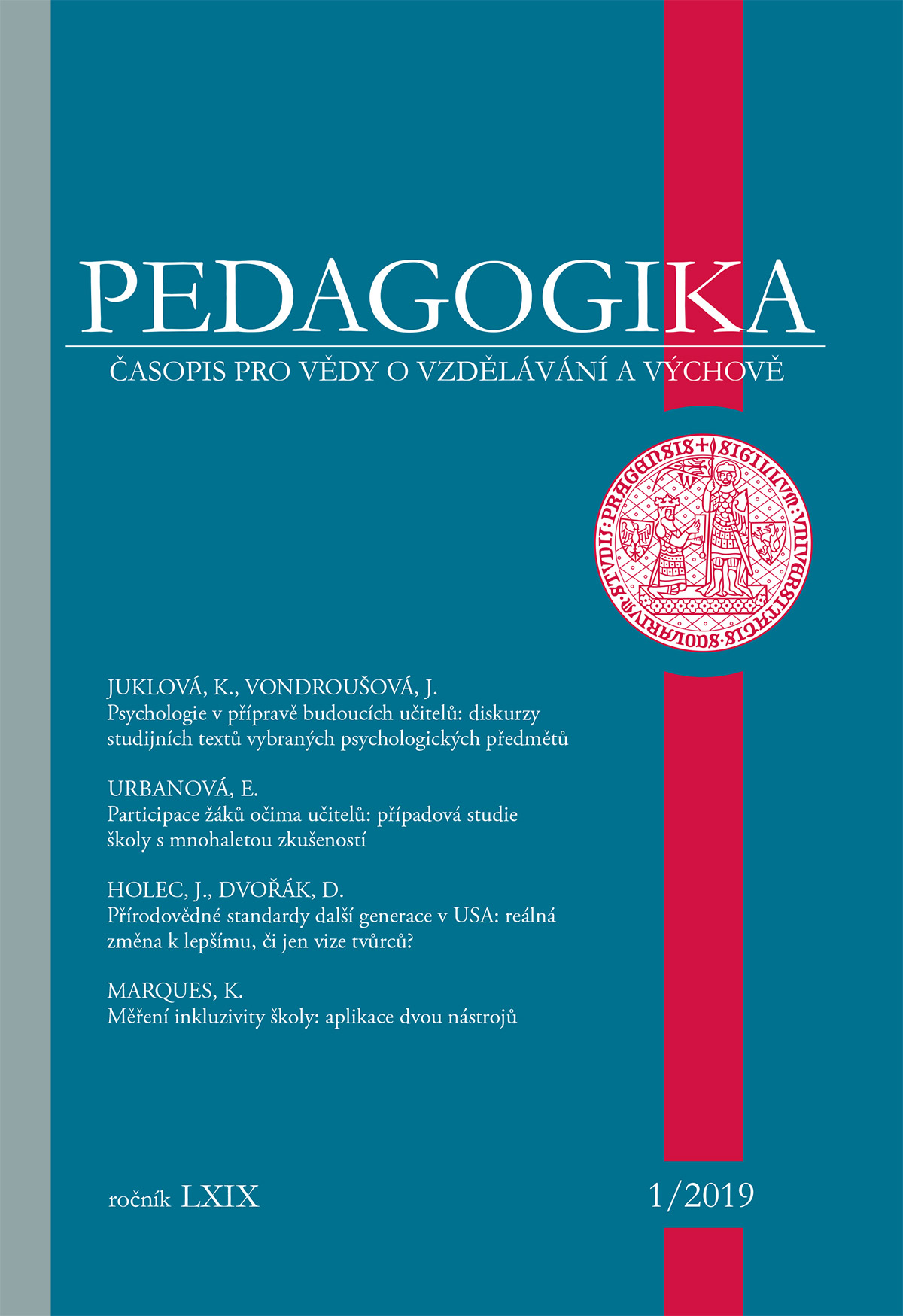Measuring the Inclusivity of the School: The application of two instruments
DOI:
https://doi.org/10.14712/23362189.2018.1198Keywords:
inclusive education, the inclusive school, index inclusion, ISSA Standards, assessment of inclusionAbstract
On the 1st of September 2016 an amended school law (Law 82/2015) came into force, bringing with it a new concept of support for pupils with special educational needs. It abandoned the categorisation of children, pupils and students on the basis of their diagnosis and instead introduced a system of supportive measures. The number of integrated pupils in the classes of the mainstream in education has been rising (CSI, 2017), and so the question of good inclusive educational practice has been becoming ever more topical. I looked for inclusive schools that could serve as examples of good practice and that I could then investigate in more detail. I first asked myself how an inclusive school in the CR could be identified. I tried to find and apply an instrument that would enable me to assess the degree of inclusion at the level of school in the Czech education system. Tins study describes findings from the implementation of Instruments for the Assessment of School in the Area of Inclusion (Tannenbergerova, 2014) and the ISSA Standards for the rating of teaching work carried out in the years 2014—2015 in selected Czech schools. I use the results of concrete schools to demonstrate the methodological problems associated with such measurement.
Keywords: inclusive education, the inclusive school, index inclusion, ISSA Standards, assessment of inclusion.



